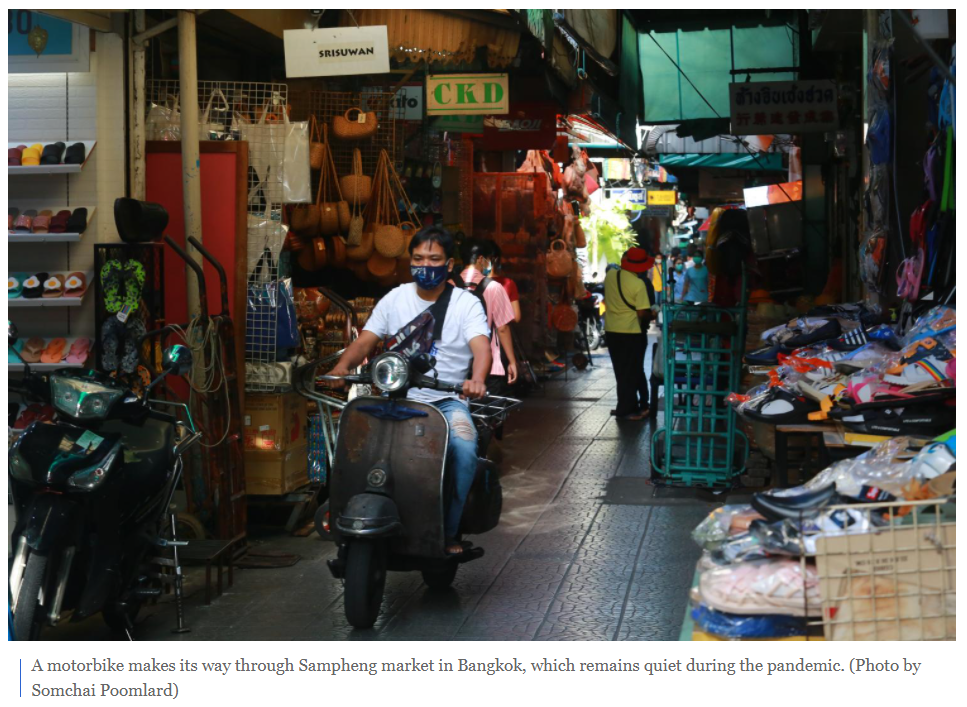Plenty of risks on the Thai horizon
Thailand’s economy is expected to endure greater risks next year because of higher limitations on fiscal and monetary stimulus, says Standard Chartered Bank (Thai).
GDP is expected to expand by 3.1% this year, but will tumble to 2.5% growth in 2022, said the bank. This forecast conflicts with assessments made by other research houses and the Bank of Thailand.
The central bank forecasts this year’s GDP growth at 3.2% before rising to 4.8% in 2022.
The regulator, however, said its 2021 growth forecast could be downgraded by as much as four percentage points, depending on the government’s management of the latest outbreak.
While a closer monitoring of economic factors is warranted, key drivers of GDP growth will be restricted going forward, said Tim Leelahaphan, economist at Standard Chartered Bank (Thai).
For instance, the financial relief handout to mitigate the plight of informal workers during the second wave of the outbreak is lower than that of the first wave, said Mr Tim.
The government provided 5,000-baht monthly handouts for three months to 16 million self-employed and laid-off people affected by the first wave of the pandemic in the middle of last year.
For this second round, the government plans to offer 31.1 million people 3,500 baht per month for two months.
Higher debt ratios for both the government and households are a key factor limiting fiscal stimulus policy.
The public debt ratio has increased from around 40% of GDP during the pre-pandemic era to 50% at present.
The ratio is expected to rise to 57% by year-end, a threshold close to the 60% public debt ceiling.
The government will likely manage the public debt-to-GDP ratio to ensure it does not exceed 60%, as it is a politically sensitive issue, said Mr Tim.
A recent report attributed to a Finance Ministry anonymous source said raising the public debt ceiling is a regular talking point among opposition parties when criticising the administration.
Higher public debt means an increased financial burden shouldered by Thailand.
At the same time, the central bank’s monetary policy also has limited space to shore up Thailand’s economic recovery momentum.
The Bank of Thailand’s Monetary Policy Committee (MPC) cut its policy rate three times, each a 25 basis points reduction, last year to shore up battered economic conditions.
The current policy interest rate is at an all-time low of 0.5%.
A policy rate cut is unlikely to promote economic growth, meaning the MPC is expected to stand pat on the existing benchmark interest rate throughout this year, said Mr Tim.
“With limited fiscal and monetary policies amid a fragile economic outlook, we see higher risks for the Thai economy next year and also for the post-pandemic period,” he said.
“Further monitoring is needed to assess a clearer outlook.”
Given these fragile economic fundamentals, a contraction of domestic consumption and investment would also dampen economic growth in 2022, said Mr Tim.
Domestic political factors also add risk for Thailand, with another possible rally as a result of the upcoming censure motion against incumbent ministers, he said.
This scenario would make it challenging for the government to implement additional fiscal stimulus, Mr Tim said.
A coalition of opposition parties on Monday filed a motion of no confidence targeting 10 cabinet ministers, including Prime Minister Prayut Chan-o-cha.
The motion calling for a censure debate was backed by 208 MPs.
Under a worst-case scenario where the government cannot contain new infections and a nationwide lockdown is imposed, Thailand’s GDP this year would be flat or experience a contraction, said Mr Tim.
Vaccination is a key factor to support the country’s reopening and tourism recovery in the second half, although it will take several years for foreign tourist arrivals to return to 40 million per year again, he said.
Source: https://www.bangkokpost.com/business/2058907/plenty-of-risks-on-the-thai-horizon


 Thailand
Thailand




